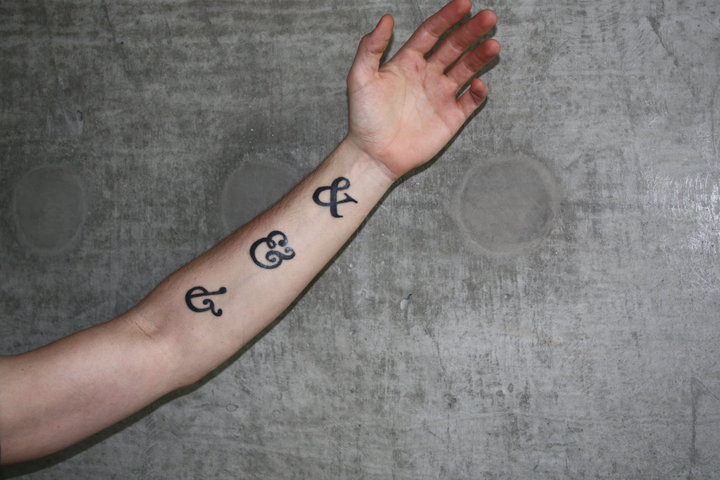So: time to catch up! Here are a few links to punctuational goings-on from the past couple of months.
First up, pan-European typefoundry Underware recently took some time to dive into the importance of the pointing hand, or manicule (☞). It’s an old mark, hailing back to the days when the readers of manuscripts and early printed books would draw little pointing hands in the margins to call attention to passages of interest. Though the manicule survived in print, it gradually slid from its previously exalted position, yielding the job of linking footnotes and text to the likes of the asterisk (*) and dagger (†). And yet, in common with the ampersand (&) and the pilcrow (¶), the manicule continues to offer discerning type designers a chance to flex their creative muscles. As Underware’s unnamed writer says in “There you go”,
What many people don’t know, because it’s not easy to spot, is that many type designers enjoy refining many details of their fonts. For example by creating manicules which fit to the style of a font family. A special pointing hand allows extravaganza [sic] typographic subtleties in your book, website, identity or whatever you are making.
What do you say? Is it time to bring the beloved but under-appreciated manicule back into the spotlight?
Next, Cameron Hunt McNabb writes about the evolution of the ellipsis (…) for Slate’s excellent Lexicon Valley blog. In particular, McNabb explains the peculiar medieval practice of “subpuncting”, or adding an ellipsis below an incorrectly copied word:
In medieval manuscripts, we find a mark—sometimes called subpuncting or underdotting—that is used to indicate the omission of a word or phrase, usually when that word or phrase has been copied erroneously. This omission mark involves placing a series of dots under the word that is to be omitted.
Subpuncted words, as McNabb says, were usually left in place — the manuscript equivalent of strikethrough, perhaps, a passive-aggressive jab at the inadequacies of the original copyist. Gradually, however, and in an almost exactly parallel with the rise of print at the expense of manuscripts, subpuncting gave way to the omission of words in favour of ellipses. And yet, McNabb wonders, are the two actually related? The academic spheres of medievalists on the one hand and modern literary scholars do not often overlap and so the nature of the link between subpuncting and the ellipsis remains unclear. Needless to say, Cameron’s article is well worth a read in its entirety!
If the full stop is dying, as has been suggested again and again, it’s taking a hell of a long time to shuffle off this mortal coil. For National Punctuation Day, Katy Steinmetz of Time weighed in with some signs that the patient may be recovering:
“Periods are not dead,” says computational linguist Tyler Schnoebelen, who turned to his own trove of 157,305 text messages to analyze how the final period—a period at the end of a thought or sentence—was being used and shared his initial results exclusively with TIME. “They’re actually doing interesting things.”
As Schnoebelen goes on to explain, those interesting things are not surprising: short text messages are more likely to manage without at least one full stop while longer messages require full stops to help the reader break them into manageable chunks. Where they do occur, those periods mean business:
Texts ending in a period, in Schnoebelen’s analysis, had a disproportionate amount of the words told, feels, feel, felt, feelings, date, sad, seems and talk. By contrast, many of the words that tended to show up in texts that did not end with a period were more casual kinds of speech: lol, u, haha, yup, ok, gonna.
Of course, correlation isn’t causation. Schnoebelen’s work suggests that the full stop is often a participant in sentences intended to convey important sentiments, but he stops short of suggesting that the period itself is the thing that lends them their import. As important as punctuation is, in other words, don’t neglect the words themselves.
Finally, a couple of pieces of self-promotion. First, a few weeks ago I had an enjoyable and wide-ranging chat with Mandy Godwin of Heleo, where we talked about the past, present and future of the book, and in which I used the words “which” and “actually” many times over. You can read the transcript at Heleo — if you do, and if you have any comments, feel free to leave a comment below!
Lastly, I’ll be giving a talk at the St Bride Foundation in March next year. Tickets are on sale now.
Thanks for reading!
